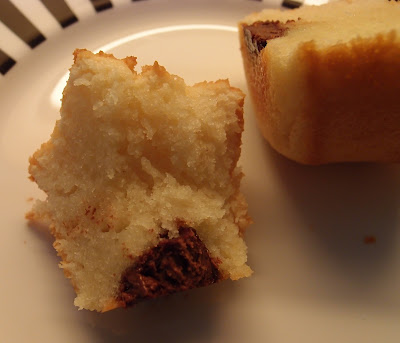I do love a good sponge; it has always
been a weakness of mine. This week I
decided to keep it really simple – a lovely sponge with thick white icing. Given it’s turned out to be the hottest
weekend of the year so far, it was a good choice – definitely not the time to
be making delicate buttercreams!
I toyed with calling this a bakewell
sponge, but it is more bakewell influenced in that it borrows the idea of
almond, cherry and icing. There is
something about adding almond to a sponge that elevates it to a higher level of
delight – particularly the day after baking when all the nutty richness has
been released.
I have finally realised –
embarrassingly late, perhaps – how much better hot water is than cold when
making a white icing/glaze. Not sure
why, but my thought would be that the hot water (I used boiled, straight from
the kettle) melts the sugar on impact giving a smoother finish, and then sets
quicker. Am I imagining it, or do you
agree?
This recipe is similar (but not
identical) to a previous bakewell sandwich cake that I made. In that recipe I made the cake in two
sandwich tins and used jam and icing.
Ingredients
For
the cake:
265g unsalted butter, at room
temperature
265g caster sugar
4 eggs
265 self raising flour
½ teaspoon baking powder
35g ground almonds
1 teaspoon almond extract
5 tablespoons soured cream
265g caster sugar
4 eggs
265 self raising flour
½ teaspoon baking powder
35g ground almonds
1 teaspoon almond extract
5 tablespoons soured cream
For
the icing:
200g icing sugar
2-3 tablespoons hot water, or enough to make a thick, but pourable, icing
2-3 tablespoons hot water, or enough to make a thick, but pourable, icing
To decorate: glace cherries
Method
Preheat the oven to 180°C/fan oven 160°C/350°F/gas mark 4.
Line a 20cm square pan with baking paper. If you prefer, you could use a 30cm x 20cm
traybake tin but you will get a ‘flatter’ sponge.
Beat together the butter and sugar until pale, light and
whippy. It should look almost like
whipped cream.
Beat in the eggs one at a time. If the mixture looks like it might curdle
beat in some of the flour.
Stir in the flour, baking powder, ground almonds, soured
cream and almond extract.
Spoon into the prepared tin and level the surface.
Bake for approximately 45 minutes or until a skewer inserted
into the cake comes out cleanly. Start
checking the cake for ‘done-ness’ after 40 minutes. NB, if you are using the shallower traybake
tin only bake for approximately 30 minutes before checking.
Leave to cool for 10 minutes in the tin; the cake will
settle a little.
Remove from the tin and leave to cool completely on a wire
rack.
Now make the icing: beat together the icing sugar and water
until you have a thick but pourable glaze.
Always add the water gradually – it’s easy to add more, but harder to
correct a too runny consistency.
Pour the glaze over the cake and leave to set.
Before fully set decorate the top of the cake with glace
cherries. I chose to leave them whole so
they stood proud from the icing.
Bask in the glory of the wonderful thing you have created.
Eat.










































